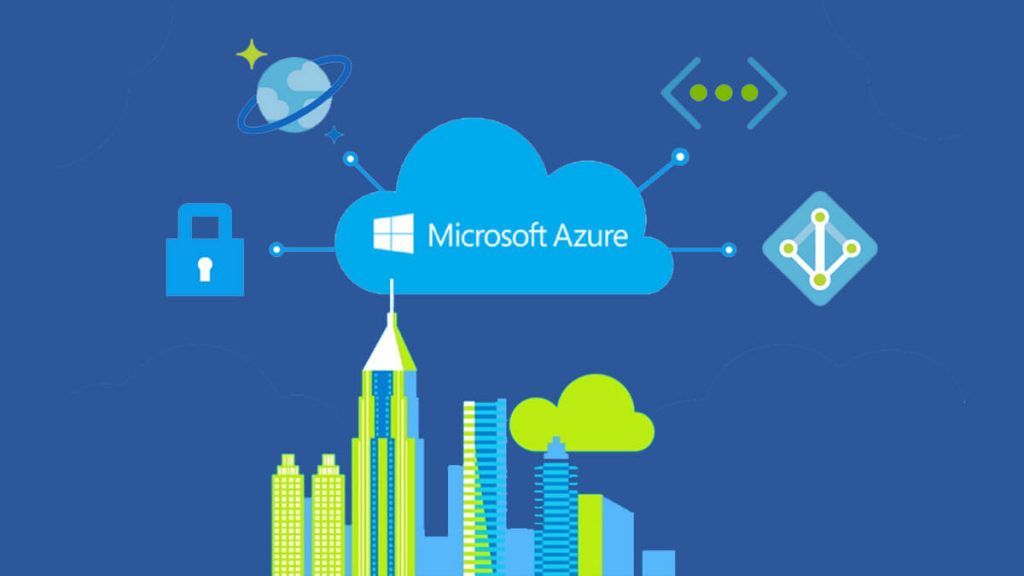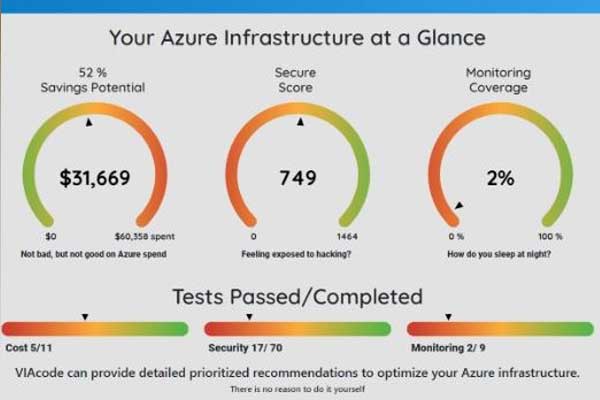What are Azure Snapshots and How Do They Work?
Azure snapshots are point-in-time copies of Azure managed disks, which are used to store data for virtual machines (VMs) and other Azure services. Snapshots provide a convenient way to backup and restore data, as well as to create copies of VMs for testing or development purposes. When a snapshot is taken, Azure creates a read-only copy of the disk at that moment in time, allowing users to access and restore data as needed.
Pricing is an important consideration when using Azure snapshots, as users are charged based on the amount of data stored in the snapshot and the duration of time it is stored. Understanding the different pricing models and how to estimate costs can help users optimize their Azure workloads and avoid unexpected charges. This guide will provide a comprehensive overview of Azure snapshot pricing, including best practices for maximizing cost efficiency and staying up-to-date with pricing changes.
Comparing Azure Snapshot Pricing Models
Azure offers two main pricing models for snapshots: on-demand and scheduled snapshots. Understanding the cost implications of each model can help users make informed decisions when it comes to Azure snapshot pricing.
On-demand snapshots are taken manually by the user and are billed based on the amount of data stored in the snapshot and the duration of time it is stored. This model is useful for users who need to take occasional snapshots for backup or testing purposes, but can become expensive if used frequently or for large amounts of data. For example, if a user takes an on-demand snapshot of a 1TB disk, they will be charged for the full 1TB of data stored in the snapshot, even if only a small portion of the data has changed since the last snapshot.
Scheduled snapshots, on the other hand, are taken automatically at regular intervals and are billed based on the average amount of data changed between snapshots. This model is more cost-effective for users who need to take frequent snapshots or who have large amounts of data, as they are only charged for the changes made since the last snapshot. For example, if a user has a 1TB disk and takes daily scheduled snapshots, they will only be charged for the average amount of data changed each day, rather than the full 1TB of data stored in each snapshot.
It’s important to note that both on-demand and scheduled snapshots have additional costs associated with them, such as storage and data transfer costs. Understanding these costs and how to estimate them can help users optimize their Azure workloads and avoid unexpected charges. This guide will provide tips and strategies for estimating Azure snapshot costs and maximizing cost efficiency.
How to Estimate Azure Snapshot Costs
Estimating Azure snapshot costs is an important step in optimizing your Azure workloads and avoiding unexpected charges. Here are the steps for estimating Azure snapshot costs:
- Identify the number and size of disks that will be snapshotted: The number and size of disks will impact the amount of data stored in each snapshot and the duration of time it is stored, which will affect the overall cost.
- Determine the frequency of snapshots: The frequency of snapshots will impact the cost of scheduled snapshots, as users are charged based on the average amount of data changed between snapshots. More frequent snapshots will result in higher costs, while less frequent snapshots may increase the risk of data loss.
- Consider storage and data transfer costs: In addition to the cost of storing the snapshot data, users may also incur data transfer costs for moving data in and out of Azure. Understanding these costs and how to optimize them can help reduce overall Azure snapshot pricing.
- Use Azure pricing calculators: Azure provides pricing calculators that allow users to estimate the cost of Azure services, including snapshots. These calculators take into account the number and size of disks, the frequency of snapshots, and storage and data transfer costs to provide an accurate estimate of the total cost.
To optimize Azure snapshot costs, consider using best practices such as scheduling snapshots during off-peak hours, using incremental snapshots to reduce storage costs, and monitoring usage and adjusting settings as needed. This guide will provide additional tips and strategies for maximizing cost efficiency when using Azure snapshots.
Real-World Examples of Azure Snapshot Pricing
Understanding the real-world implications of Azure snapshot pricing can help users make informed decisions when it comes to managing their Azure workloads. Here are some examples of Azure snapshot pricing in action:
- Case Study: A software development company uses Azure snapshots to backup their virtual machines (VMs) before making changes to the software. By using scheduled snapshots, they are able to minimize storage costs and avoid unexpected charges. The company has also implemented best practices such as monitoring usage and adjusting settings as needed to optimize costs.
- Testimonial: A small business owner uses Azure snapshots to backup their customer data. By using on-demand snapshots, they are able to take backups whenever they need to, without worrying about the cost implications. The business owner has also found that Azure snapshot pricing is competitive with other cloud storage solutions, making it a cost-effective choice for their needs.
- Lesson Learned: A large enterprise learned the hard way that not monitoring Azure snapshot usage can lead to unexpected charges. By implementing best practices such as scheduling snapshots during off-peak hours and monitoring usage, they were able to reduce their Azure snapshot pricing and optimize their Azure workloads.
These examples highlight the importance of understanding Azure snapshot pricing and implementing best practices to optimize costs. By staying informed and proactive, users can make the most of Azure snapshots and ensure that their Azure workloads are cost-effective and efficient.
Maximizing Cost Efficiency with Azure Snapshots
Azure snapshots can be a cost-effective solution for backing up and protecting data, but it’s important to take steps to optimize costs and avoid unexpected charges. Here are some tips and strategies for maximizing cost efficiency with Azure snapshots:
- Schedule snapshots during off-peak hours: Taking snapshots during off-peak hours can help reduce storage and data transfer costs, as network usage and demand for resources is typically lower during these times.
- Use incremental snapshots: Incremental snapshots only capture changes made since the last snapshot, reducing storage costs and making it easier to manage and restore data.
- Monitor usage and adjust settings as needed: Regularly monitoring Azure snapshot usage and adjusting settings such as snapshot frequency and retention policies can help optimize costs and avoid unexpected charges.
- Consider using third-party tools: Third-party tools and services can help manage and optimize Azure snapshot costs, providing features such as automated scheduling, cost estimation, and reporting.
By following these best practices, users can maximize cost efficiency with Azure snapshots and ensure that their Azure workloads are cost-effective and efficient. It’s also important to stay informed about Azure snapshot pricing changes and new features, as this can help users make informed decisions and optimize their Azure workloads for the long term.
Azure Snapshot Pricing vs. Other Cloud Storage Solutions
When it comes to cloud storage solutions, Azure snapshots are just one of many options available to users. Here’s a comparison of Azure snapshot pricing to other popular cloud storage solutions, including AWS and Google Cloud:
- AWS: AWS offers similar snapshot functionality to Azure, with pricing based on the amount of data stored and the duration of time it is stored. However, AWS charges for data transfer costs, which can add up quickly for large snapshots or frequent data transfers. Azure, on the other hand, does not charge for data transfer costs within the same region.
- Google Cloud: Google Cloud also offers snapshot functionality, with pricing based on the amount of data stored and the duration of time it is stored. However, Google Cloud charges for data transfer costs, similar to AWS. Google Cloud also charges for snapshot operations, such as creating or deleting snapshots, which can add to the overall cost.
When choosing a cloud storage solution, it’s important to consider factors such as cost, features, and scalability. Azure snapshots offer a cost-effective and efficient solution for backing up and protecting data, with flexible pricing models and a range of features to meet the needs of different users. By comparing Azure snapshot pricing to other cloud storage solutions, users can make informed decisions and choose the best solution for their specific use case.
Staying Up-to-Date with Azure Snapshot Pricing Changes
Azure is constantly updating its pricing models and features to provide users with the best possible experience. When it comes to Azure snapshot pricing, it’s important to stay up-to-date with any changes or updates to ensure that you’re making informed decisions and optimizing your Azure workloads.
- Check Azure documentation: Azure provides comprehensive documentation on its snapshot pricing models and features. Regularly checking this documentation can help you stay informed about any changes or updates.
- Join Azure community forums: Azure community forums are a great resource for staying up-to-date with the latest Azure news and updates. Joining these forums and participating in discussions can help you stay informed about any changes to Azure snapshot pricing.
- Monitor Azure blogs and social media: Azure regularly updates its blogs and social media channels with news and updates about its products and services. Following these channels can help you stay informed about any changes to Azure snapshot pricing.
By staying up-to-date with Azure snapshot pricing changes, you can ensure that you’re making informed decisions and optimizing your Azure workloads for the best possible cost and performance. It’s important to take a proactive approach to managing costs and staying informed, as this can help you stay ahead of the curve and make the most of Azure’s features and capabilities.
Conclusion: Making Informed Decisions with Azure Snapshot Pricing
Azure snapshot pricing is an important consideration for users looking to make the most of Azure’s storage and backup capabilities. By understanding the different pricing models, estimating costs, and implementing best practices for cost efficiency, users can optimize their Azure workloads and avoid unexpected charges.
When it comes to choosing a cloud storage solution, Azure snapshots offer a range of features and benefits that make them a popular choice for many users. However, it’s important to compare Azure snapshot pricing to other cloud storage solutions and consider the advantages and disadvantages of each platform before making a decision.
Staying up-to-date with Azure snapshot pricing changes is also crucial for making informed decisions and optimizing costs. By regularly checking Azure documentation, joining community forums, and monitoring Azure blogs and social media, users can stay informed about any changes or updates to Azure snapshot pricing and make the most of Azure’s features and capabilities.
In summary, taking a proactive approach to managing costs and optimizing Azure workloads is essential for making informed decisions when it comes to Azure snapshot pricing. By following the tips and strategies outlined in this guide, users can ensure that they’re making the most of Azure’s storage and backup capabilities while avoiding unexpected charges and optimizing costs.







